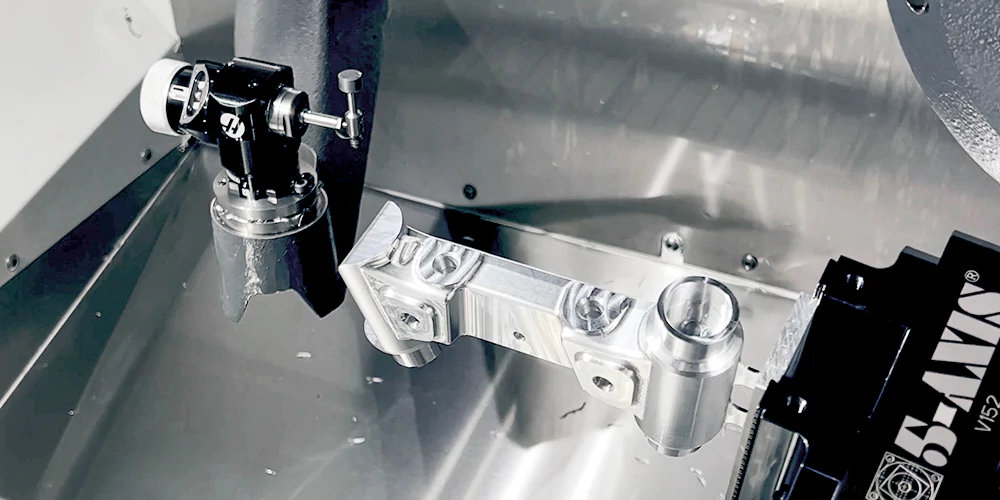The heart of modern manufacturing beats to the pulse of accuracy. In an era where uniformity typically reigns supreme, the capacity to create unique parts adapted to specific needs has become a pillar of innovation. This is where modern machining methods, such as CNC turning, shine. CNC turning enables businesses to produce very precise cylindrical components with excellent accuracy and reproducibility. This technology not only improves product quality but also considerably decreases production time and cost. As industries expand and require more specialized solutions, CNC turning machining and other advanced machining processes will become increasingly important in generating innovation and preserving a competitive advantage.
The Art and Science of Customization
Custom parts are more than just tweaks on current items; they are answers to unique problems. They could be parts for a revolutionary medical gadget, an essential component for space exploration, or specialized equipment for high-performance machines. Each item carries the DNA of its intended use, which necessitates precision, durability, and often complicated designs.
The road from concept to reality starts with a thorough understanding of the client’s requirements. Engineers and designers work closely together to transform abstract concepts into actual plans. This is where the groundwork for custom components is laid. The production process begins when the design has been finalized.
CNC Turning: A Versatile Tool for Customization
Computer Numerical Control (CNC) turning is a machining method in which a cutting tool cuts a spinning workpiece to create cylindrical pieces. Its adaptability and precision make it an excellent choice for custom part fabrication.
Precision: CNC machines operate with micrometer accuracy, ensuring that parts meet rigorous specifications. This is critical for applications that require great performance and reliability.
Complexity: Modern CNC machines can handle intricate curves and contours, allowing the fabrication of exceedingly complex items that would be difficult or impossible to manufacture using traditional methods.
Efficiency: CNC turning is highly automated, resulting in shorter manufacturing times and less human error. This leads to greater efficiency and cost-effectiveness.
Material Versatility: CNC machines can operate with a broad variety of materials, including metals, alloys, polymers, and composites, expanding the possibilities for custom part creation.
The Custom Parts Manufacturing Process
The creation of a custom part is a multi-step process that requires expertise and attention to detail:
Design and engineering: The process starts with a detailed grasp of the part’s function and specifications. Engineers design comprehensive 3D models and drawings to help guide the production process.
Material Selection: Choosing the correct material is critical to part performance. Strength, weight, corrosion resistance, and cost are all important considerations.
CNC Programming: Skilled programmers convert the design into code that informs the CNC machine how to manufacture the part. This includes specifying toolpaths, speeds, and feeds.
Machining: The CNC machine removes material from the workpiece to form the required shape. This technique may involve a variety of cutting tools and processes, including turning, facing, grooving, and threading.
Finishing: After machining, the part goes through finishing operations to attain the desired surface quality and dimensions. This could include polishing, grinding, or heat treatment.
Quality Control: The part is thoroughly inspected to ensure that it satisfies the prescribed tolerances and quality requirements.
Assembly: In some circumstances, numerous bespoke pieces must be combined into a single component. This necessitates precision and attention to ensure optimal fit and functionality.
The Impact of Custom Parts
Custom parts are the foundation of numerous enterprises. They drive innovation and performance across industries such as automotive, aerospace, medical devices, and energy. For example, in the automotive business, custom-machined components improve fuel efficiency, safety, and vehicle performance. In the medical field, precision-engineered implants and tools improve patient care. Custom parts are extremely important in the aircraft industry, where strict standards and great performance are required for safety and efficiency. In the energy sector, specific components are required for the development and maintenance of renewable energy systems to ensure reliability and sustainability.
Custom components production capabilities will evolve in tandem with technological advances. Emerging technologies such as additive manufacturing (3D printing) and sophisticated materials are broadening the scope of what may be accomplished. These advancements enable more complicated shapes, greater material characteristics, and speedier production times. As a result, industries can react faster to shifting demands and produce more sophisticated, high-performance goods. The continued growth of bespoke parts manufacturing will surely result in even more innovations and upgrades across all industries, reinforcing its vital role in driving progress and innovation.
What the Future Holds for Custom Parts Manufacturing
The future of specialized component production looks bright. With advances in automation, artificial intelligence, and materials science, the possibilities are limitless. We should expect to see increasingly more complicated and high-performance parts manufactured with increased efficiency and precision. Automation will streamline production processes, reducing human error and improving uniformity. Artificial intelligence will improve design and production by streamlining workflows and anticipating possible problems before they occur. Advanced materials will provide more durability, strength, and versatility, creating new opportunities for creativity.
Furthermore, there is an increasing emphasis on sustainability in production. This drives the development of environmentally friendly materials and processes, as well as waste reduction and energy efficiency. Companies are progressively implementing sustainable methods to reduce their environmental impact, such as recycling materials and using renewable energy sources. This emphasis on sustainability not only benefits the environment but also meets the growing demand from customers and regulators for greener products. As these trends continue, the future of bespoke parts manufacturing will be determined not only by technological breakthroughs but also by a desire to create a more sustainable and responsible sector.
Conclusion
Custom component manufacturing highlights human ingenuity and technology prowess. Manufacturers can create high-quality components by combining advanced machining techniques with design expertise. As industries expand, specialist parts will become more vital in fostering innovation and efficiency across multiple sectors.
